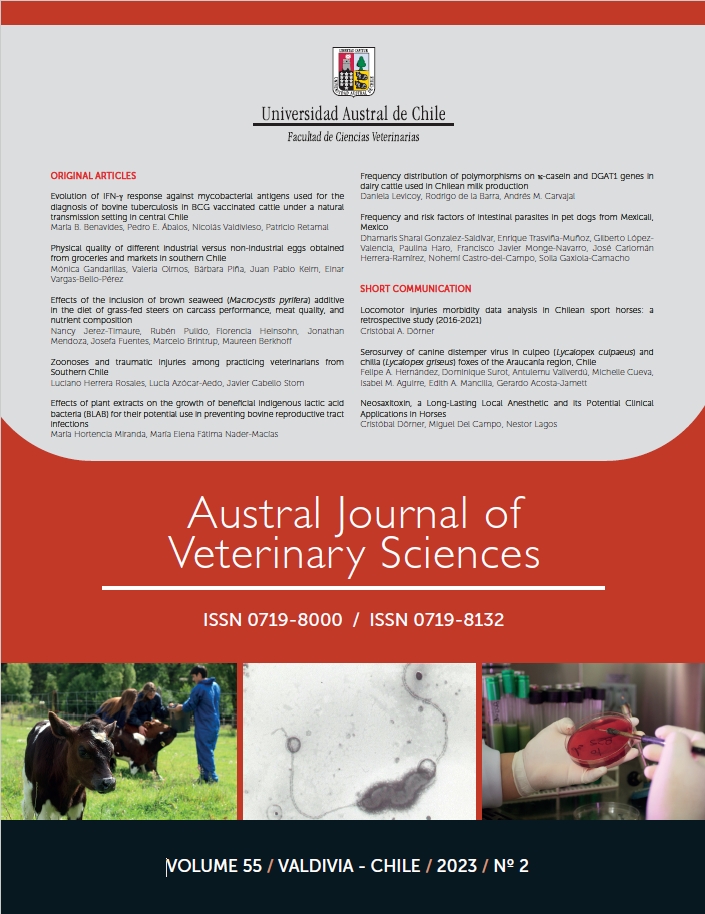Physical quality of different industrial versus non-industrial eggs obtained from groceries and markets in southern Chile
Contenido principal del artículo
Resumen
The aim of this study was to determine external and internal quality parameters of industrial (cages and cage-free) and family farms eggs that are normally available at groceries in developing countries such as Chile. Two experiments were performed to evaluate 1) quality differences between family farms and industrial eggs and 2) to determine quality differences between brown shell eggs from different industrial cage and cage-free systems. Experiment 1 consisted of five groups where three of them were industrial eggs: i) cage white shell eggs, ii) cage brown shell eggs, iii) brown shell cage-free eggs; and two of them were non-industrial: iv) family farm brown shell eggs and v) family farm blue shell eggs. Experiment 2 had four groups, all brown-shell types of eggs were used: i) cage brown eggs, ii) cage-free from aviary eggs, iii) southern free-range eggs and iv) central free-range eggs. In both Experiments, egg weight, egg length, egg width, egg shape index, Haugh units, albumen ratio, egg yolk, yolk weight and albumen weight, blood and meat spots were determined. In Experiment 1, brown and blue-shelled family farm eggs were equal in terms of external and internal quality, except for blood spots, with brown eggs having more incidence. In Experiment 2, free-range eggs presented more intense yolk colors compared to those from battery and cages. In both experiments, free-range eggs presented the darker yolk color. It can be concluded that brown and blue-shelled family farm eggs are equal in terms of external and internal quality, except for blood spots, with brown eggs having more incidence. In addition, free-range eggs from the southern part of the country presented better shell quality, whereas free-range eggs presented more intense yolk colors, while those of battery.

